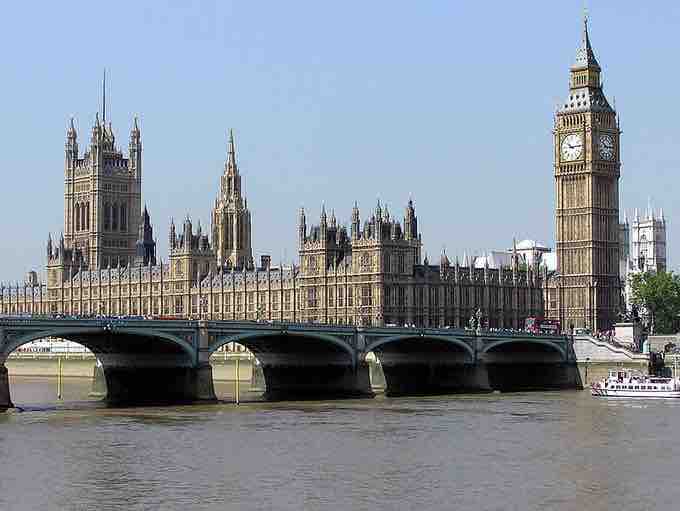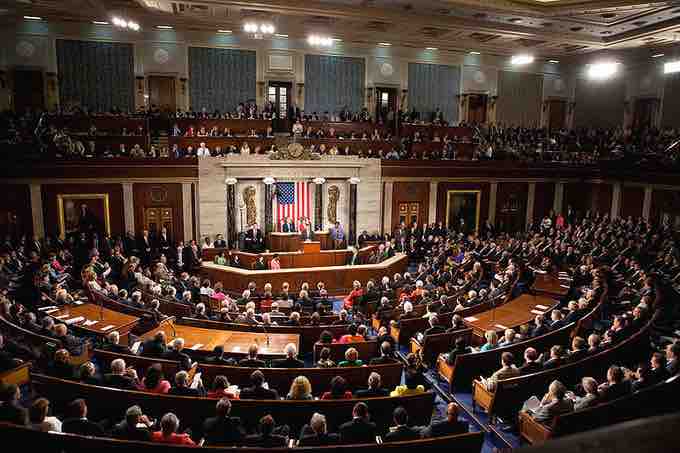Political Parties
A political party is a political organization that typically seeks to influence government policy, usually by nominating their own candidates and trying to seat them in political office. Parties often espouse an expressed ideology or vision bolstered by a written platform with specific goals, forming a coalition among disparate interests.
Parliamentary Party Structure
When the party is represented by members in the lower house of parliament, the party leader simultaneously serves as the leader of the parliamentary group of that full party representation. Depending on a minimum number of seats held, Westminster-based parties allow for leaders to form frontbench teams of senior fellow members of the parliamentary group who serve as critics of aspects of government policy. When a party becomes the largest party not to be represented in a Westminster-style parliament, the party's parliamentary group forms the Official Opposition. The Official Opposition frontbench team members often form the Official Opposition Shadow cabinet. When a party achieves enough seats in an election to form a majority, the party's frontbench becomes the Cabinet of government ministers.
Regulation of Party Formation
The freedom to form a political party is considered a measurement of a state's adherence to liberal democracy as a political value. Regulation of political parties may manifest as a crackdown on or repression of all opposition parties or certain parties who promote ideals that run counter to the general ideology of the state's incumbents or possess membership by-laws which are legally unenforceable.
Voting Systems
The type of electoral system is a major factor in determining the type of political party system. In countries with a simple plurality voting system, there tends to be few parties elected (often only two in any given jurisdiction). In countries that have a proportional representation voting system, as exists throughout Europe, or to a greater extent ranked voting systems, such as in Australia or Ireland, three or more parties are often elected to parliament in significant proportions, and thus may have more access to public office.
Partisan and Nonpartisan Style Political Parties
Partisan style political parties varies according to each jurisdiction, depending on how many parties there are, and how much influence each individual party has.
In a nonpartisan system, no official political parties exist, sometimes reflecting legal restrictions on political parties. In nonpartisan elections, each candidate is eligible for office on his or her own merits. Unless there are legal prohibitions against political parties, factions within nonpartisan systems often evolve into political parties.
A Single Dominant Party
In single-party systems, one political party is legally allowed to hold effective power. Although minor parties may sometimes be allowed, they are legally required to accept the leadership of the dominant party. This party may not always be identical to the government, although sometimes positions within the party may in fact be more important than positions within the government. North Korea and China are examples. Other examples can be found in Fascist states, such as Nazi Germany between 1934 and 1945. The single-party system is thus usually equated with dictatorships and tyranny.
In dominant-party systems, opposition parties are allowed, and there may be even a deeply established democratic tradition, but other parties are widely considered to have no real chance of gaining power. Political, social, and economic circumstances, and public opinion can be reasons for others parties' failure. Typically in countries with less of an established democratic tradition, it is possible the dominant party will remain in power by using patronage and sometimes through voting fraud.
Two-Party Systems
Two-party systems are states in which there are two political parties dominant to such an extent that electoral success under the banner of any other party is almost impossible. One right wing coalition party and one left wing coalition party is the most common ideological breakdown in such a system, but in two-party states political parties are traditionally parties that are ideologically broad and inclusive.
The British Parliament and U.S. Congress are examples of two-party systems.
Multiple Political Parties
Multi-party systems are systems in which more than two parties are represented and elected to public office.
Australia, Canada, People's Republic of Bangladesh, Pakistan, India, Ireland, United Kingdom, and Norway are examples of countries with two strong parties and additional smaller parties that have also obtained representation. The smaller or "third" parties may hold the balance of power in a parliamentary system, and thus may be invited to form a part of a coalition government together with one of the larger parties; or may instead act independently from the dominant parties.
More commonly, in cases where there are three or more parties, no one party is likely to gain power alone, and parties work with each other to form coalition governments. Political change is often easier with a coalition government than in one-party or two-party dominant systems.

Westminster-Based Government, British Parliament
The British Parliament is a Westminster-based system of government with multiple political parties.

Joint Session of a Two-Party Congress
The United States Congress is an example of a two-party system of governance. In this picture, Obama's Health Care Speech is being given to both the House and the Senate.